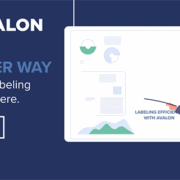Current supply chain challenges have solidified the consistent need for intelligent automation. However, solution integration can increase operational expenses beyond hardware purchases. Between software integration, employee training, and eventual maintenance and tech support, warehouses expecting to deploy automated solutions expect to pay thousands of dollars in deployment alone. Consequently, there remains a fourth of warehouses uncommitted to enhanced automation for a myriad of reasons including:
- Lack of time to deploy
- Lack of affordable options
- Employee turnover rates being faster than training times
- Older devices still functioning well
Nevertheless, automation continues to enable faster picking rates, higher accuracy rates, and greater inventory control. As a result, Avalon’s labeling experts have decided to partner with several enterprise leaders in simplifying scalable barcoding automation through the new Barcode Printing Program.
One access-point to countless automation opportunities.
By streamlining the solution design process, warehouses can expect a smoother deployment process to reduce costs and get workers more accustomed to new barcoding systems for faster ROI. This is accomplished with the following components:
- Adaptable printing hardware – Drawing from a partnership with several enterprise-ready brands, printers are selected according to your printing volume, projected goals, and budget requirements. Furthermore, adaptable devices such as Zebra’s line of thermal printers secure high printing speeds and resolutions within user-friendly units for simplistic deployment and scalability.
- Intelligent printing software and applications – White hardware is obviously crucial, printing software, operating systems, and applications work hand in hand to expand the printer’s capabilities, protect passing data, and facilitate remote management. For example, PrintDNA applications enable seamless PDF printing from ERP systems, access levels to previously printed data, and remote battery management to prevent battery failure in the middle of a shift. Different applications and software can be added to your existing printing solution, eliminating the need for a complete system upgrade.
- Durable labels that match application environments – Comprising less than 10% of total operational expenses, labels still play a vital role in supply chain efficiency. As a result, it is recommended labels be thoroughly tested to survive application and storage environments. Working with leading label developers, our specialists work with you in tailoring label size, color, surface, adhesive strength, and more to ensure its dependability.
In addition to careful solution design and deployment, the Barcode Printing Program also provides recurrent technical support for any update and repairs that arise. Close relationships with brands also provide insights and first glances at new technologies and solutions, giving you the competitive advantage.
Take the first step towards scalable efficiency and enroll today into Avalon’s Barcode Printing Program to start exploring technologies that match your operational goals and needs.



